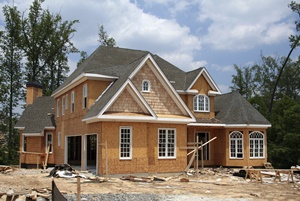Radon Resistant Homes In Wisconsin A Welcome Trend
 As awareness of radon grows throughout the country, more homebuilders are offering radon resistant homes. In Wisconsin, where we have some of the highest radon levels in the country, the idea of radon resistant homes is warmly welcomed.
As awareness of radon grows throughout the country, more homebuilders are offering radon resistant homes. In Wisconsin, where we have some of the highest radon levels in the country, the idea of radon resistant homes is warmly welcomed.
Keep in mind, though, these homes are radon resistant--not radon-proof. The techniques used to build these homes can’t entirely eliminate radon, but they can minimize its presence just by using some fairly simple construction techniques.
There are 5 things homebuilders can do minimize radon levels in homes:
- Put in gravel before the foundation. A 4-inch layer of clean, coarse gravel underneath the concrete slab allows soil gases (including radon) to move around freely below the house. By allowing the radon to flow freely, less of it will be sucked up into the basement. Sometimes, alternative materials like a perforated pipe or a collection mat are used in place of gravel.
- Heavy plastic sheeting on top of gravel. Putting a heavy plastic sheeting (6 mil. Polyethylene) or a vapor retarder on top of the layer of gravel helps keep soil gases from getting in a house. And when the concrete is poured for the slab, the sheeting keeps it from clogging up the layer of gravel.
- Vent pipe from foundation to roof. Installing a 3- to 4-inch PVC pipe running from the layer of gravel to the roof of the house will help vent radon and other soil gases. There is no need to install a fan at this point, although it can be added later if necessary.
- Caulk and seal all cracks. Sometimes, even new homes can have small cracks or crevices in the floor and walls. It’s a good idea to seal them all with polyurethane caulk to help keep radon and other soil gases out.
- Add an attic junction box. Installing an electrical outlet box in the attic is a good preemptive measure in case it turns out radon mitigation system is needed and you want the fan put in the attic. It’s much easier (and less expensive) to have a junction box installed while the home is being built than to have to put it in later.
For those planning to have a home built, the EPA has compiled a document on controlling radon through building techniques, which may help you when discussing this with a home builder. For those already living in a home and concerned about radon levels, however, the best advice is to have a radon test done so you know how serious a problem you have.
The risks of living with radon are real, so why risk it? Lifetime Radon Solutions offers radon testing for homes and businesses throughout southeast Wisconsin. The testing period lasts 2 days and we get the results to you as quickly as possible (usually via email).
If testing shows your home has elevated levels of radon our radon mitigation specialists can install a radon mitigation system in one afternoon. Contact us today to schedule radon testing for your home or to request an estimate for radon mitigation. We install radon mitigation systems throughout all of southeast Wisconsin.
 262-955-5701
262-955-5701




